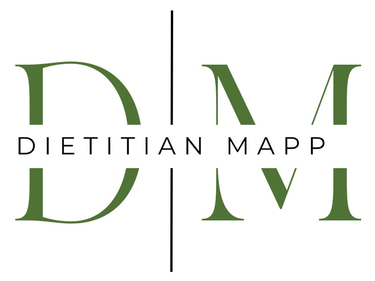Creatine and Women: What the Research Really Says
Creatine isn’t just for men — research shows it’s a safe, natural, and effective supplement for women too, supporting strength, muscle tone, and even brain and bone health when combined with regular training. Backed by decades of evidence, creatine monohydrate offers a simple, affordable way to enhance both performance and long-term wellbeing.
10/19/20254 min read


For years, creatine was seen as a supplement for male athletes chasing strength and size. But recent research tells a different story — one where women of all ages can benefit from creatine too. From supporting strength and muscle recovery to potential cognitive and bone health benefits, creatine is fast becoming a smart addition to women’s health and performance routines.
What is Creatine?
Creatine is a naturally occurring compound made in your body from amino acids (arginine, glycine, and methionine) and stored mainly in your muscles and brain. It’s also found in foods such as red meat and fish — though you’d need to eat several kilos a day to match the amounts used in studies.
Supplemental creatine — usually in the form of creatine monohydrate — is synthetically produced but identical to the molecule your body makes. That means it’s both natural and vegan-friendly.
How Creatine Works
During short, high-intensity efforts (like sprints or heavy lifts), your body relies on stored phosphocreatine to regenerate ATP — the main energy currency of your cells. More phosphocreatine means more rapid energy production, allowing you to push harder for longer. Beyond performance, creatine supports muscle cell hydration, protein synthesis, and even mitochondrial (‘power house cells) function — with growing evidence of benefits for the brain and bone metabolism, especially in women.
What the research shows for women:
Performance and Strength: Meta-analyses and recent trials confirm that creatine combined with resistance training improves strength, lean mass, and training quality in women, with similar effect sizes to men when dosing and training are matched (Burke et al., 2023).
Bone and Menopausal Health: Post-menopausal women may experience greater benefits when combining creatine with strength training. Reviews from 2024–2025 show improvements in muscle strength and potential protection against age-related bone loss when used alongside resistance exercise.
Cognition and Brain Health: Emerging evidence suggests creatine may enhance cognitive function in older adults and under sleep-deprived or stressful conditions — an area of growing interest for women’s health research.
Pregnancy and Breastfeeding: There’s not yet enough data to recommend routine use during pregnancy or breastfeeding. Until more is known, women in these stages should seek professional advice before supplementing.


Is Creatine Safe?
Yes — in healthy adults, creatine monohydrate is one of the safest and most extensively studied supplements available. Decades of clinical trials and reviews show no evidence of kidney damage or harmful side effects at standard doses (3–5 g per day).
In current research in healthy adults, creatine does not cause kidney damage, however those with existing kidney disease, or taking nephrotoxic medications, should consult a healthcare professional before use.
How Are Creatine Supplements Made?
Creatine supplements are made through a safe chemical process combining sarcosine (a derivative of the amino acid glycine) and cyanamide, followed by purification and crystallisation. The end product — creatine monohydrate — is pure, stable, and identical to natural creatine found in the body.
Most brands now offer micronised powders, which dissolve better and are easier on the stomach.
When and How to Take Creatine
Daily dose: 3–5 g of creatine monohydrate once a day.
Optional loading phase: 20 g/day (split into 4 doses) for 5–7 days can saturate muscle stores faster, but isn’t essential.
Timing: Consistency is more important than timing. Some studies suggest a small benefit to taking creatine after training, especially with a meal containing carbs and protein.
Hydration: Drink plenty of water — creatine slightly increases intracellular water retention.
Which Creatine is Best?
Stick with creatine monohydrate. It’s the form used in nearly every study, proven to be effective, affordable, and safe. Fancy alternatives (creatine HCl, ethyl ester, nitrate, etc.) offer no clear advantage. Look for a third-party tested product (e.g. Informed-Sport, NSF Certified for Sport) to ensure purity and quality.
Why People Take Creatine
To improve strength, power, and training performance
To increase lean muscle mass
To enhance recovery between sessions
For potential cognitive benefits
To support muscle and bone health during ageing
Vegetarians and vegans may notice even greater effects, as they tend to have lower baseline muscle creatine levels.
Is Creatine Necessary?
Not essential — but highly beneficial for those training regularly, seeking muscle or strength gains, or looking to support long-term health. Diet alone rarely provides enough creatine to fully saturate muscle stores.
For most women, 3–5 g/day is a simple, evidence-based addition that complements resistance training and supports both performance and wellbeing.
Current research and expert consensus (including the International Society of Sports Nutrition, 2021) show no need to cycle or take breaks from creatine supplementation in healthy individuals. Studies lasting up to five years have found no adverse effects from continuous daily use at standard doses (3–5 g per day).
Cycling — for example, taking creatine for 8–12 weeks and then stopping — originated more from gym folklore than scientific evidence. Your body’s muscle creatine stores simply return to baseline after a few weeks without supplementation; there’s no benefit in resetting them periodically.
Bottom Line
Creatine isn’t just for male bodybuilders — it’s one of the few supplements backed by solid science for both women and men. From improving workout performance to supporting bone and brain health as we age, creatine monohydrate offers a safe, affordable, and well-researched way to enhance physical and cognitive vitality.
Just make sure to choose a reputable brand, stay hydrated, and take it consistently for the best results.
References
Burke, D. G., et al. (2023). Creatine supplementation and resistance training adaptations in women: A systematic review and meta-analysis.
International Society of Sports Nutrition (ISSN) Position Stand: Creatine Supplementation and Exercise (2021).
Forbes, S. C., et al. (2025). Creatine Supplementation in Women’s Health: Muscle, Bone and Cognitive Benefits.
Wallimann, T., & Clark, J. (2020). Phosphocreatine and energy metabolism in muscle and brain.
Kreider, R. B., et al. (2017). International Society of Sports Nutrition Position Stand: Safety and efficacy of creatine supplementation in exercise, sport, and medicine.
Persky, A. M., & Rawson, E. S. (2023). Safety of creatine supplementation: A systematic review of kidney function in humans.
Allen, P. J., et al. (2024). Creatine supplementation and cognitive performance: Emerging evidence and future directions.
